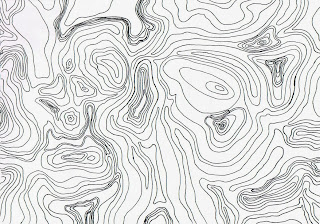The popularly held view of violence is that it occurs
between a Good Guy vs. a Bad Guy. This simplistic view of violence is appealing
to many people including my nine year old daughter. When watching a television
conflict she always wants to know who the Bad Guy is. It is easiest and most satisfying for her to
reduce all conflict to a battle of Good vs. Evil.
This viewpoint is promoted by everyone from Hollywood, children’s
stories, the news media, to the Self-Defense Industry and the Sexual Violence Prevention
Industry. They spread the Keep it Simple Stupid violence
description because it is an effective marketing strategy for selling products
and promoting self-serving agendas. Sell the Good Guys products to defend
against the Bad Guys. Donate money and/or support government funding and save
the Good Victims from the Evil Perpetrators. It works.
The reality is that violence is complicated. It is
multi-layered. It is multi-dimensional. There are multiple factors that
surround every incident of violence. There are many levels of violence. There
is low level violence, mid-level and high level violence. There is violence
that easily predicted and understood. There is logical violence. There is
violence that runs darker and deeper than most people can perceive or imagine.
Violence comes with consequences. Sometimes these
consequences are beneficial. Sometimes, they are not. Sometimes, Good Guys do
bad things. Sometimes, Good Guys attract violence. Sometimes, Good Guys
initiate violence. Sometimes, the violence is done in the name of Self-Defense,
sometimes it is not. Sometimes, the Bad Guys are really, really bad. Sometimes,
the Good Guys are not so good.
When someone wants to learn self-defense. He or she
typically views himself as the Good Guy in need of protection from the Bad Guy.
But what this person doesn’t really know is WHO or WHAT he or she needs
protection FROM. WHAT are the real dangers this person faces, as opposed to his
or her FEARS and beliefs? WHAT is this person willing and capable of doing to
defend him or herself? WHY is this person most likely to be involved in
violence and with WHO? WHAT are the most likely circumstances of the violence?
This person needs a map. Not just a simplistic one
dimensional map that tells her how to get “safely” from Point A to Point B.
But, a topographical map that lays out the entire landscape of violence with
its multiple layers, levels, twists and turns, dizzying heights and bottomless
holes. He needs to know that there are some places you just don’t go without
the necessary skills, experience, and mindset not common to ordinary man. That
means if the line between Point A and Point B takes you to a place you don’t belong,
take another route regardless of your right and desire to maintain the straight
and narrow.
If you view a typical topographical map, you will notice
that the majority of the map is made up of wavy lines some distance apart.
The tight concentric circles that make up the steep hills and mountains are
less frequent. The wavy lines are the valleys, the rolling hills, the
low levels of violence. This is the lower level encountered by most people most
of the time. These are the common conflicts and confrontations that make up
human life. The tight circles are the high mountain of violence that should be
avoided by all but the most prepared and the most committed. The highly
prepared, the unwitting and the unlucky find themselves on these Mountains of
extreme violence.
What makes the Topography of Violence different than an ordinary landscape is that the terrain is subject to rapid change. Most of the time, these changes come with advance warnings, similar to tremors preceding an earthquake. But sometimes, the changes come quickly and provide only moments to transform a hill into a mountain. Individuals also have the power to influence their surrounding terrain. What they say and do can whip up a steep hill or reduce a mountain into a mole hill. A good Map clearly labels the impending warning signs of terrain change.
What makes the Topography of Violence different than an ordinary landscape is that the terrain is subject to rapid change. Most of the time, these changes come with advance warnings, similar to tremors preceding an earthquake. But sometimes, the changes come quickly and provide only moments to transform a hill into a mountain. Individuals also have the power to influence their surrounding terrain. What they say and do can whip up a steep hill or reduce a mountain into a mole hill. A good Map clearly labels the impending warning signs of terrain change.
Danger occurs when you view a small section of the Map and
think that section represents the entire landscape or Topography of Violence.
You are prepared for the hills, but find yourself on a mountain. Your fear of
the high violence of the mountains inhibits you from adequately dealing with
the rolling hills and valleys of everyday conflict where your risk is much
lower. Your strategies and social conditioning for surviving and thriving in the low
lands may lead you to disaster in the highlands.
The journey of a thousand miles may begin with a single
step. But, the journey of self-defense and effective conflict management begins
with an accurate Map. One that allows you to view and negotiate the varied safe
and hostile terrain. A map you bought at
street corner dojo or on the internet that claims to guide you to safety with simplistic
solutions to stopping Bad Guys isn’t it.
